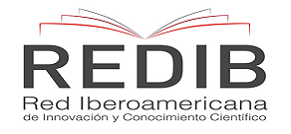Recreational activities for the prevention of alcoholism in adolescents who study Baccalaureate
Keywords:
Recreational Activities, Family, Alcoholism, Adolescents, ParticipationAbstract
This study aimed to propose recreational activities that help keep students in actions that benefit the progress of their intellectual, psychological and socio-emotional capacity, as well as their basic physical capacities; promoting a healthy environment, contributing to the insertion of adolescents with problems of consumption of alcoholic beverages. The research is applied in the province of Santa Elena, Cantón Salinas, in the urban parish of Santa Rosa, specifically to a population of 25 unified general high school students from the Dolores Elena Quelal Educational Unit, where data collection was qualitative and quantitative. We used the survey technique and field observation, whose results describe that the average age of adolescents who begin to consume alcoholic beverages ranges from 15 to 16 years of age, a trend that is consistent with the studies of the World Health Organization, with a 100% of the respondents that have tried some type of alcoholic beverages. In addition, it is described that these actions are derived from factors directly associated with family consent, curiosity, and motivation of their "friends", among others, denoting that there is a permissibility with the consumption of alcoholic beverages. Based on this background, it was necessary to implement a program of recreational activities and dynamics, in order to allow the involvement of adolescents and to keep their attention on beneficial aspects. Among the activities implemented, group integration stands out, which was acceptable to 85% of the adolescents, and relationship dynamics, which were acceptable to 90% of the adolescents. This shows the positive influence of group dynamics on adolescents, as they help them stay busy with productive activities.
Downloads
References
Ardoche Vilar, D., La O Fuentes, M., & Rubio Pérez, A. A. (2019). Sistema de actividades para prevenir el alcoholismo en la comunidad 30 de diciembre en contramaestre santiago de cuba. Revista Caribeña de Ciencias Sociales, 3, 1-12.
Bisquerra, R. (1989). Métodos de investigación educativa: Guía práctica (1ª ed). Barcelona: CEAC.
Castellanos, Ó., Chávez, R., & Jímenez, C. (2003). INNOVAR. Propuesta de formación en liderazgo y emprendimiento. Revista de Ciencias Administrativas y Sociales, 22, 145-165.
Fundación San Vicente. (2021). Informe de sostenibilidad. https://www.sanvicentefundacion.com/informes-de-sostenibilidad
INEC. (2022). https://www.ecuadorencifras.gob.ec/estadisticas/
Ochoa, V., & Aguilar, K. (2022). Técnicas y dinámicas recreativas para la comunidad. Círculo Rojo.
Organización Mundial de la Salud. (2018). Estadísticas Mundiales de la Salud 2018 de la OMS. https://codigof.mx/estadisticas-mundiales-de-la-salud-2018-de-la-oms/
Organización Panamericana de la Salud. (2019). Informe sobre la situación mundial del alcohol y la salud 2018. https://iris.paho.org/bitstream/handle/10665.2/51352/OPSNMH19012_spa.pdf?sequence=1
Downloads
Published
How to Cite
Issue
Section
License
Copyright and Licensing
For all articles published in Atena Journals, copyright is retained by the authors. Articles are licensed under an open access Creative Commons CC BY 4.0 license, meaning that anyone may download and read the paper for free. In addition, the article may be reused and quoted provided that the original published version is cited. These conditions allow for maximum use and exposure of the work, while ensuring that the authors receive proper credit.
Reproducing Published Material from other Publishers
It is absolutely essential that authors obtain permission to reproduce any published material (figures, schemes, tables or any extract of a text) which does not fall into the public domain, or for which they do not hold the copyright. Permission should be requested by the authors from the copyrightholder (usually the Publisher, please refer to the imprint of the individual publications to identify the copyrightholder).
Permission is required for:
- Your own works published by other Publishers and for which you did not retain copyright.
- Substantial extracts from anyones' works or a series of works.
- Use of Tables, Graphs, Charts, Schemes and Artworks if they are unaltered or slightly modified.
- Photographs for which you do not hold copyright.
Permission is not required for:
- Reconstruction of your own table with data already published elsewhere. Please notice that in this case you must cite the source of the data in the form of either "Data from..." or "Adapted from...".
- Reasonably short quotes are considered fair use and therefore do not require permission.
- Graphs, Charts, Schemes and Artworks that are completely redrawn by the authors and significantly changed beyond recognition do not require permission.
Obtaining Permission
In order to avoid unnecessary delays in the publication process, you should start obtaining permissions as early as possible. If in any doubt about the copyright, apply for permission. Atena Journals cannot publish material from other publications without permission.
The copyright holder may give you instructions on the form of acknowledgement to be followed; otherwise follow the style: "Reproduced with permission from [author], [book/journal title]; published by [publisher], [year].' at the end of the caption of the Table, Figure or Scheme.














